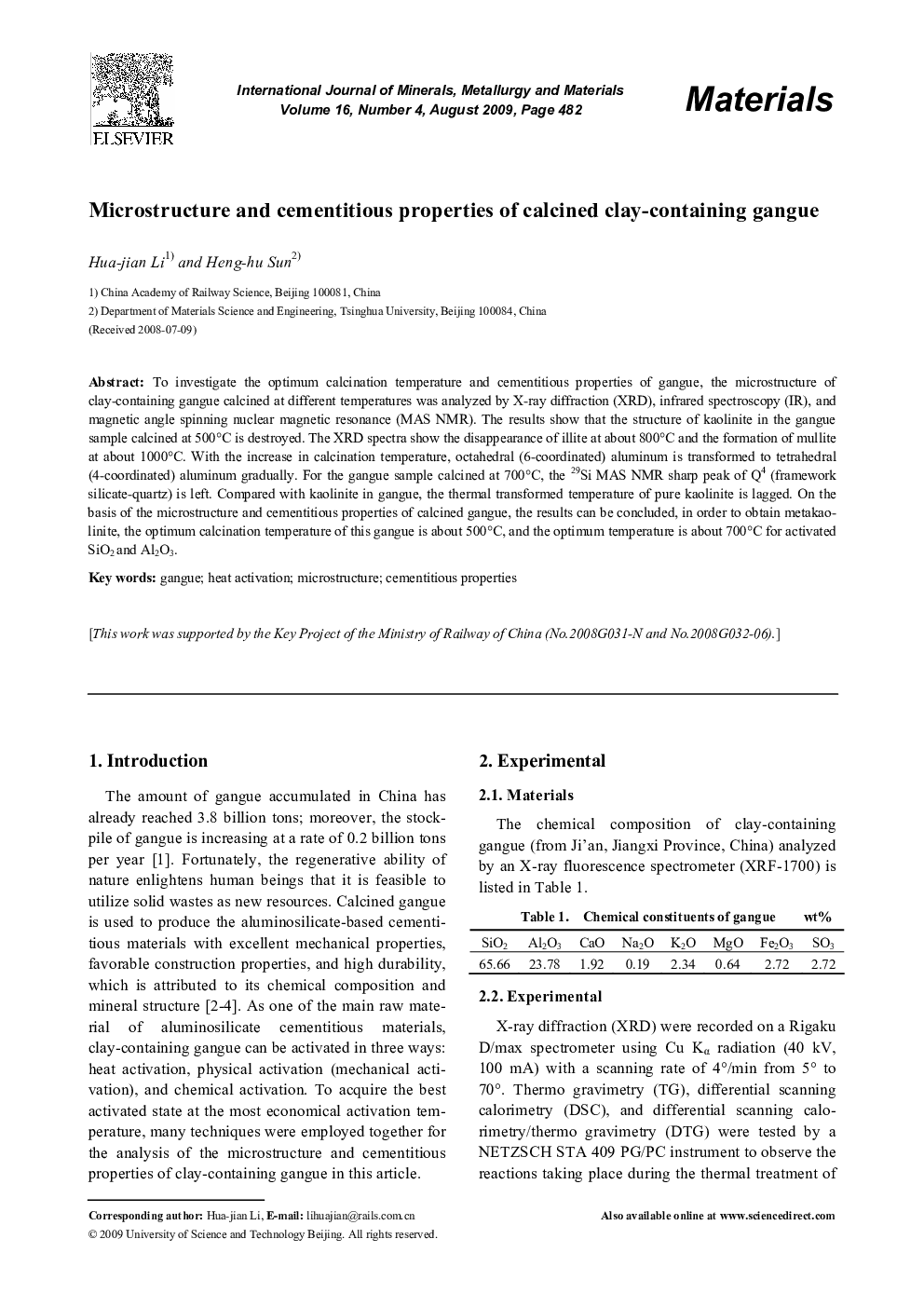| Article ID | Journal | Published Year | Pages | File Type |
|---|---|---|---|---|
| 1602433 | International Journal of Minerals, Metallurgy and Materials | 2009 | 5 Pages |
Abstract
To investigate the optimum calcination temperature and cementitious properties of gangue, the microstructure of clay-containing gangue calcined at different temperatures was analyzed by X-ray diffraction (XRD), infrared spectroscopy (IR), and magnetic angle spinning nuclear magnetic resonance (MAS NMR). The results show that the structure of kaolinite in the gangue sample calcined at 500°C is destroyed. The XRD spectra show the disappearance of illite at about 800°C and the formation of mullite at about 1000°C. With the increase in calcination temperature, octahedral (6-coordinated) aluminum is transformed to tetrahedral (4-coordinated) aluminum gradually. For the gangue sample calcined at 700°C, the 29Si MAS NMR sharp peak of Q4 (framework silicate-quartz) is left. Compared with kaolinite in gangue, the thermal transformed temperature of pure kaolinite is lagged. On the basis of the microstructure and cementitious properties of calcined gangue, the results can be concluded, in order to obtain metakaolinite, the optimum calcination temperature of this gangue is about 500°C, and the optimum temperature is about 700°C for activated SiO2 and Al2O3.
Keywords
Related Topics
Physical Sciences and Engineering
Materials Science
Metals and Alloys
Authors
Hua-jian Li, Heng-hu Sun,
